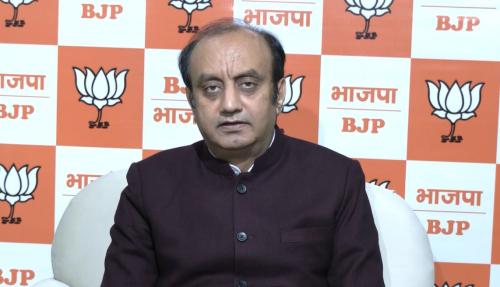New Delhi: The residents of Delhi on November 8 breathed poison with pollutants touching calamitous levels, as a thick grey smog hung low across the region, prompting authorities to declare closure of schools shut till Sunday, and also to halt construction activities and ban entry of trucks in the city. The Delhi government in a health advisory said, the smog, which triggered near zero visibility at many places, pile-ups on highways and delay in flight operations, is a mixture of carbon monoxide, particulate matter such as PM2.5, PM10, ground level ozone and oxides of nitrogen and sulphur dioxide. The government has also announced that all schools in the national capital would remain closed till November 12 in view of the “unbearable” air pollution. In its health advisory, the government has also advised people to stay indoors as much as possible as the “smog is poisonous” and may create many health hazards like asthma attacks and other breathing complications. It also advised people to drink plenty of water and fluids, as a thick smog continued to hang low across the national capital. According to a report by PTI, Lt Governor Anil Baijal approved the Environment Pollution (Prevention and Control) Authority’s decision to enforce these measures enlisted under the ‘severe plus’ or emergency category of the Graded Response Action Plan (GRAP). The decisions were approved by Baijal in a meeting which was also attended by Chief Minister Arvind Kejriwal and EPCA member Sunita Narain among a host of senior officials. “The Central Pollution Control Board (CPCB) task force has advised EPCA that given the prevailing air pollution emergency in the city, there is a need to take actions which are listed in the severe plus category,” it said. Earlier in the day, CM Kejriwal took to Twitter and wrote that it was “an emergency” and that his office was “continuously trying” to fix a meeting with his counterparts in Punjab and Haryana on stubble burning, a process that leads to air pollution in Delhi. Over Kejriwal seeking a meeting to discuss the issue, Punjab CM Amarinder Singh said discussion of chief ministers would serve no meaningful purpose, as the Centre alone is equipped to address this issue, which has inter-state implications. The day-long average air quality index of the Central Pollution Control Board (CPCB) had a score of 478 on a scale of 500, indicating ‘severe’ levels of pollution, while many individual stations recorded AQI as high as 487. If the score touches 500 and persists there for at least 48 hours, measures like odd-even and a ban on construction and demolition activities will come into force across the Delhi-NCR under the Graded Response Action Plan (GRAP). Transport Minister Kailash Gahlot told that the government was ready to implement the odd-even car-rationing scheme and arrangements were underway to press more buses into service. “We will enforce odd-even in Delhi if air quality turns severe plus. I have also directed DTC to procure 500 buses on short-term basis to augment public transport till March. Metro has also been asked to hire around 300 buses for 15-20 days if odd-even is implemented,” Gahlot said, adding that two-wheelers will be exempted from the scheme as and when it is rolled out. Post the meeting, the EPCA said that a decision on whether or not to implement the odd-even car-rationing scheme will be taken tomorrow. In a bid to reduce dependence on private vehicles, the metro and Delhi Transport Corporation has also announced decisions to augment services by pressing more trains and buses into service. The Delhi Metro Rail Corporation Limited (DMRC) said it would run an additional 186 train trips from tomorrow. However, EPCA member Sunita Narain cautioned against putting too much hope in temporary solutions such as closure of schools and deplored the “lack of political will” in executing tougher decisions. “Cities and administrations need to implement solutions and take bold decisions to reduce emissions. The range of actions recommended and directed by the EPCA is targeted at doing just that, and it is now up to the political leadership of Delhi and NCR to take their implementation forward,” Narain, who is also the chief of the Centre For Science and Environment (CSE), said. The EPCA had made it clear yesterday that its orders were legally binding and had to be enforced once the chief secretaries of the respective states issue them. Meanwhile, over 20 vehicles collided and around 22 people suffered minor injuries during the morning hours when visibility was a measly 10 meters in a series of incidents of pile-ups at multiple locations on the busy Yamuna Expressway. For the second day in a row, operations at the Delhi airport were also hampered and there were delays of up to two hours. According to airport sources, there were times when only one runway was operable as visibility dropped in the afternoon. According to the forecast of the Union Ministry of Earth Sciences’ System of Air Quality and Weather Forecasting And Research (SAFAR), the 24-hour-average concentrations of PM2.5 and PM10 will be around 420 and 678 micrograms per cubic meter. The corresponding safe standards of these ultra-fine particulates, up to 30 times finer than the width of a human hair, are 60 and 100, respectively. The secretary of the Ministry of Earth Sciences, Madhavan Rajeevan, said the smog in Delhi is not localized, but spread across the entire region. He said the conditions would persist for another two-three days. Apart from Delhi, neighboring Faridabad, Ghaziabad, Gurgaon and Noida were also in the ‘severe’ category. Residents of the city also complained of heavy breathing and watery eyes as the smog did not even spare living rooms or underground metro stations. The Indian Medical Association had also declared a “public health emergency” and appealed to the government to stop outdoor sports and other such activities in schools to protect the health of children.
Toxic smog suffocates Delhi; schools shut, construction halted
- by Rinku
- November 09, 2017 2 minutes

Toxic smog-2










